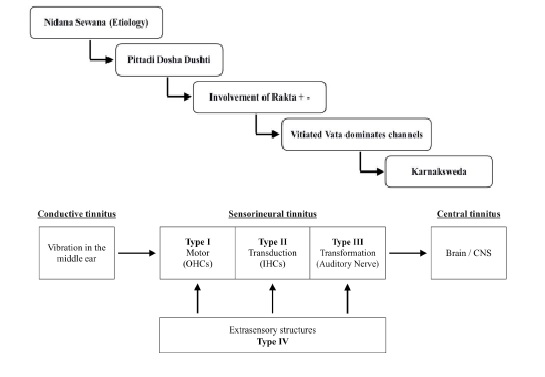Critical Analysis of Karnakshweda with its Modern Aspect
Abstract
Shalakyatantra, one of the eight branches of Ayurveda deals with diseases above the level of the clavicle, i.e., Urdhwajatru. In that, there are twenty-eight Karnarogas as described by Acharya Sushruta, Yogratnakara, and Bhavprakasha. Karnaksweda is one of the Karnaroga that resembles Karnanada, but there is vitiation of Pittadi doshas with a predominance of Vata in the channels of Karna, leading to the generation of Venughoshavata, i.e., flute-like sound, because of different etiological factors like Dhatu Kshayaa, Ruksha Bhojana, etc.
In modern science, tinnitus is described as an unwanted auditory perception of internal origin, usually localised, and rarely heard by others. It can be subjective, when experience is of the individual alone, or, less commonly, objective. It, moreover, acts as a symptom rather than a disease with multifactorial etiology. Karnakshweda can be specifically correlated with cochlear synaptic tinnitus, i.e., tinnitus due to inner ear causes. The majority of cases of tinnitus are subjective; objective tinnitus is far less common. Treatment for Karnaksweda is described as the same as for Karnanada, which includes Vatahar Chikitsa, Snehana, Dhoomapana, Karnapoorana, etc., but there is no specific treatment for Tinnitus in modern science because of idiopathic etiopathogenesis. Ayurveda is a more effective science for the management of diseases like tinnitus.
Downloads

Copyright (c) 2023 International Journal of Ayurveda and Pharma Research

This work is licensed under a Creative Commons Attribution-NonCommercial-ShareAlike 4.0 International License.






